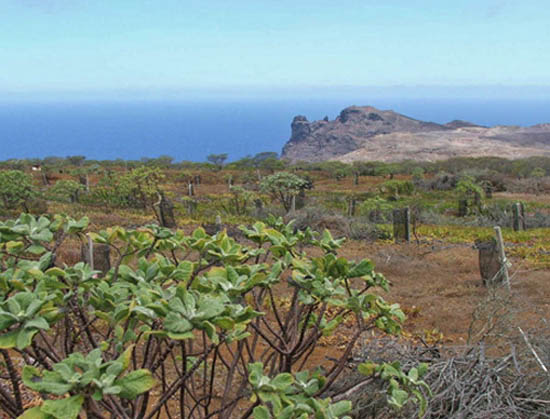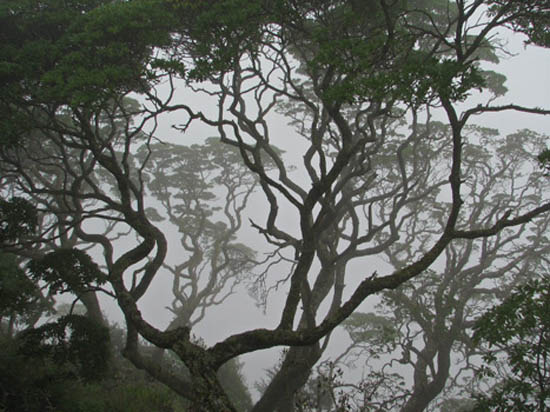The Millennium Forest: evolving and maturing
by Vince Thompson, St. Helena National Trust
The landscape of St. Helena was once very different. From the coast to the high interior lush vegetation was dominant. The arrival of the Portuguese in the 16th century and the subsequent waves of inhabitation have changed the island dramatically.
The Great Wood, that covered much of the island, was cut down for firewood, decimated by introduced goats and out-competed by invasive vegetation. But since the turn of the century the people of St. Helena have been trying to restore this lost heritage. The roots of the Millennium Forest were in fact planted before the turn of the century. George Benjamin, a pioneer of St. Helena’s environmental awareness and action, began planting gumwood (Commidendrum robustum), a rare endemic of the Asteraceae and the national tree of St. Helena, and experimented with different cultivation methods nearly two decades ago. Those planted in the 1980s grew well and there were more plantings in 1995 and 1998.
The project launch unleashed a tremendous amount of community energy. Virtually every islander paid for a tree, and during this initial phase about 3,000 trees were planted. The gate-house was built, a car park laid out and forestry workers employed to continue the work. Eight years on much has been achieved and, of course, there is still much to do. About 25 hectares have been planted so far and the total land area now reserved for the Millennium Forest is 250 hectares. So the challenge is to maintain the planted areas while expanding into the new.

Gumwood saplings are also being planted at Peak Dale between the existing stands of mature gumwood trees. Peak Dale is the last remaining site in St. Helena where gumwoods have survived in significant numbers since before human settlement. However, in recent years self-regeneration on this site has been unsuccessful. The cause is unknown but damage caused by rabbits and stray sheep and cows is at least part of the problem, so the newly planted saplings are protected by tree guards to help them through the first few years. Another problem for the establishing vegetation is the lack of water, especially during the hot summer months.
The eroded soil, lack of water and grazing means gumwood saplings require intensive care to become established and survive. Currently there are just two forestry workers to plant, water and clear the ground of invasive species and funding is being sought to increase the number of forestry workers employed by the St. Helena National Trust.
Invasive species are the main cause of much time and effort spent on ground clearance work. The most successful invasive plant is the creeping succulent Carpobrotus edulis. Other aliens are present in the forest but the eroded and degraded soil means they do not spread and become as problematic as in other parts of the island. Samphire (Suaeda fruticosa), white tungi (Opuntia cochenillifera) and salt bush (Atriplex semibaccata) are some of the species that need to be kept in check.
St. Helena is symbolic of the fragility of islands: remote, historic, plundered places with high levels of endemism and natural beauty. It is also a symbol of the global fight for conservation, where a few individuals work tirelessly with limited resources to make change happen.
